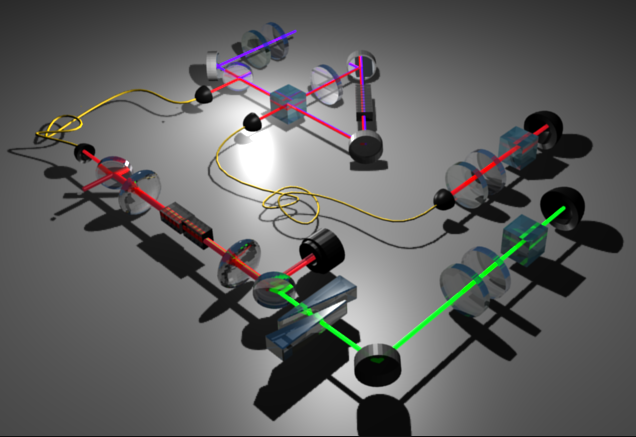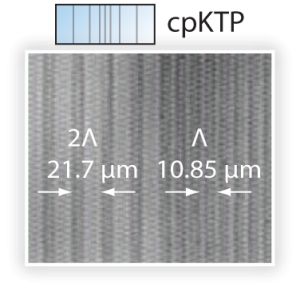Coherent Photonic Interfaces
Mature quantum technology will mix various physical systems into hybrid architectures, with photonics tying them together. Coherent photonic interfaces match the wavelengths and spectra of flying qubits with stationary systems such as quantum memories — ideally while preserving coherence, and in particular entanglement. We have shown up-conversion of polarization-entangled photons, downconversion of single photons, and spectral compression of single photons which will be crucial to reduce insertion loss of broad-band downconversion photons into narrow-band atomic quantum memories.


Tailored nonlinearities
A novelty for quantum photonics at the time was to tinker with the standard poling periods for periodically-poled crystals to reshape their effective nonlinearity and thus the joint spectrum of the photon pairs created in our quantum light sources. In 2011 we showed that even a crude discretisation can approximate a Gaussian joint spectrum reasonably well. We have since refined this technique showing that almost perfectly pure photons can be created using sub-coherence length crystal domain engineering.
Quantum light sources
The task was simple yet challenging: build an entangled photon-pair source with at least MHz flux generated by a mere laser diode. And that's what we did, improving the back-then state-of-the-art kHz sources by three orders of magnitude. The Sagnac design, first implemented at MIT and perfected by us, has since been replicated in dozens of groups internationally. It's been and still is the driving force of many of our experiments, has been used for a loophole-free Bell experiment in Vienna, and also served as a blueprint for the source on the Micius quantum satellite.
